Building muscle is critical to helping children with Ds combat low muscle tone and reach development milestones. Nikki Degner, MPT, works with children with special needs at Move and Grow! in Huntersville, North Carolina. Her daughter, Nora, and Charlie teamed up to demonstrate six of Nikki’s most recommended exercises to strengthen muscles key to walking.
Climbing stairs
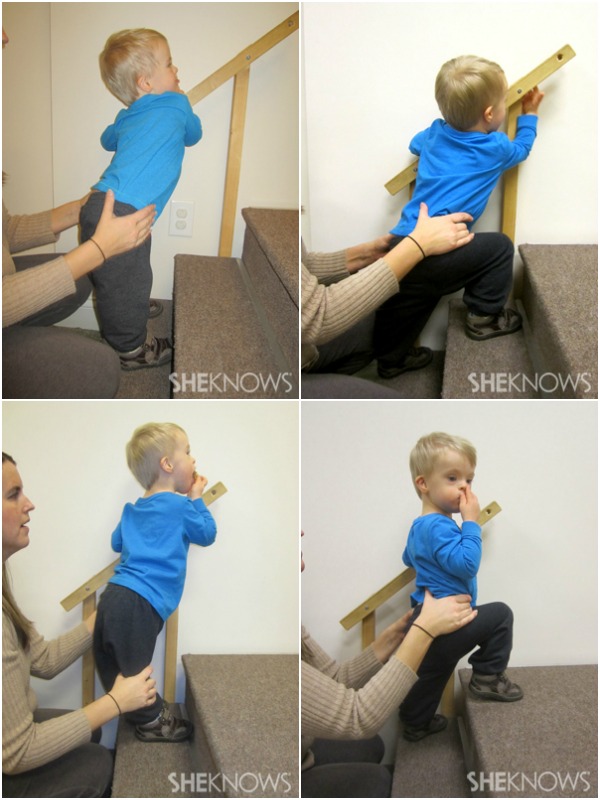
This exercise has multiple benefits, Nikki says. “By working with your child to learn to climb stairs, you’re teaching a skill they’ll need throughout their lifetime, and you’re also strengthening all the ‘core’ and leg muscles needed to walk.”
An additional benefit is safety. “If your child learns how to safely climb and descend stairs, you decrease the risk of what could happen during those three seconds when he manages to elude you and approach a staircase,” Nikki adds.
In these photos, note that Nikki is supporting Charlie’s waist as he steadies himself with the railing, then presses a gentle “reminder” at his knees so he bends his knees to climb up. Taking a step up, then leaning on that knee and using that leg’s muscles to rise to the next step builds both leg and abdominal muscles.
Next up: Work is the pits!
{pageBreak}
Work is the pits!
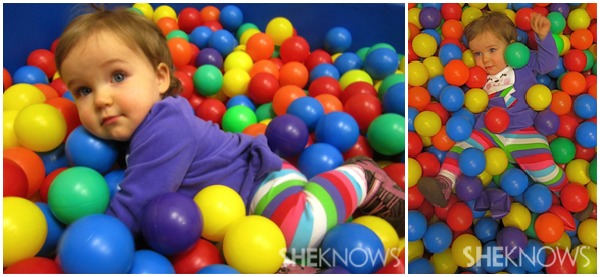
How can ball pits help build muscles? Kids use their abdominal muscles to sit back up among the balls, which will constantly shift and force them to use their trunk muscles.
“Kids love to flop among the balls,” Nikki points out. “So make them work by covering your child’s torso with balls so he has to ‘climb’ out. This engages all his abdominal muscles and trunk muscles overall.”
Next up: Have a ball!
{pageBreak}
Easy exercise ball techniques
An exercise ball helps strengthen critical abdominal muscles — and kids love to bounce and balance! Two easy exercises can make all the difference:
Focus on balance
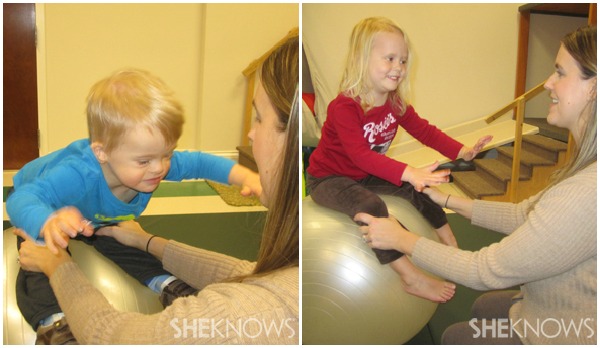
Note that Nikki is supporting Charlie on the exercise ball by holding onto his thighs, not his waist. “If a child really needs help, it’s OK to start by stabilizing them by holding their waists, but they’ll get a better workout by using their abdominal muscles to balance on the ball while you secure them at the thighs,” she says.
Nikki’s daughter, Nora, is older and stronger than Charlie, so Nikki only needs to support her at the knees as she balances on the ball.
Make your child’s abdominal muscles do the work by bouncing up and down and gently rocking the ball from side to side and front to back. As your child balances without touching the ball or you, these exercises build strength in abdominal and back muscles. An added benefit: These exercises help build confidence.
“Sometimes, kids are amazed at what they can do,” Nikki shares. “Accomplishing something that looks so hard can be a huge boost to their self-confidence, and you might get even more out of the workout because he’ll be willing to try more.”
Crunch time

Another fun exercise: Have your child lay back on the ball while you secure him at the hips and thighs. As he crosses his body by reaching to the left with his right hand and to the right with his left hand as he sits up , he flexes the oblique muscles.
“Making ‘workouts’ fun is the best trick to getting a child to work with you and not against you,” Nikki shares. “If your child is cranky or fighting a particular activity, switch it up and try again later. You’ll both waste precious energy struggling to get through the motions, and the end result is less benefit than if the child is engaged.”
Next up: Take a squat
{pageBreak}
Squats
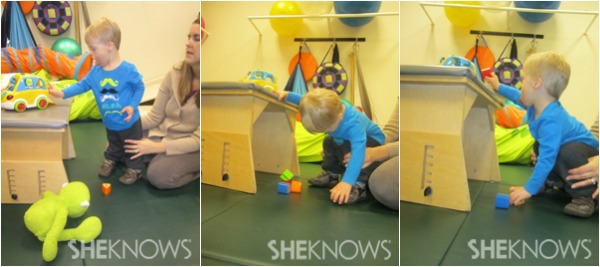
We’ve all done them, knowingly and painstakingly. But it’s easy to sneak squats into your child’s play by strategically placing toys where he needs to squat down to retrieve them.
Note how Nikki’s hands are at Charlie’s knees, gently reminding him to bend and squat instead of keeping his knees locked and stretching to his toes without bending. Once the child is in a squatting position, Nikki recommends creating an excuse to hang out there for a while, which helps to build thigh, trunk, hips and glute muscles.
Next up: Reach for the stars!
{pageBreak}
Reaching from knees
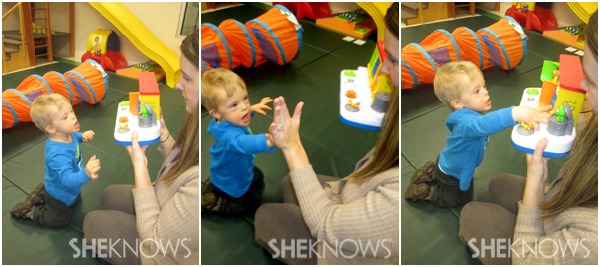
Again, it’s all about combining play with workouts that build muscle and balance. By encouraging your child to play from his knees, he can increase his balance and strengthen his legs. This exercise can also focus on fine motor development, by including a toy that requires specific finger movements, such as pushing a button or turning a wheel.
“Any higher surface will do,” Nikki says. “A step stool or small ottoman will do the trick. Even a stack of pillows creates a challenge high enough to make your child reach for objects on top.”
Next up: Creative crawling
{pageBreak}
Crawling — army or otherwise
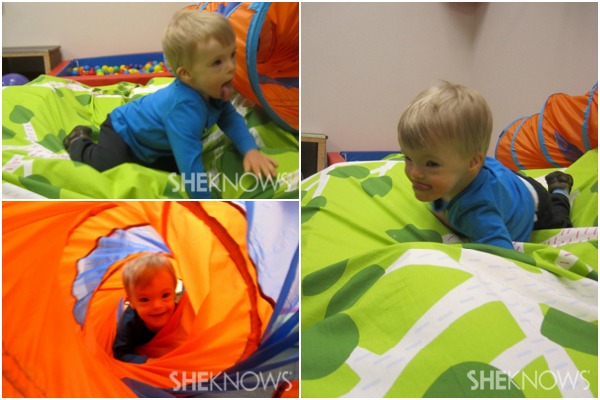
When Charlie was about 15 months, he refused to crawl or even try to walk. He got wherever he wanted to go via the “army” crawl, moving along the floor on his stomach by pulling with his arms and legs. While I fretted, Nikki assured me this method was helping to build muscle for when his stubborn streak gave way to his desire to walk.
Of course, now that he’s walking, the army crawl is a thing of the past. But introducing a fun tunnel or by stacking pillows under a big blanket, you can create a challenging way to bring back the benefits of crawling — and continue to build those arm, leg and abdominal muscles.
“Every parent is eager to see her child reach the next milestone,” Nikki explains. “But each child is determined to move at his own pace, so the best thing we can do is maximize their existing interests to build strength and balance, all preparing him for the moment when he decides he wants to get to the next level.”
More about exercises for kids
How to make exercise fun for kids
Best exercise games for healthy kids
Itsy bitsy yoga